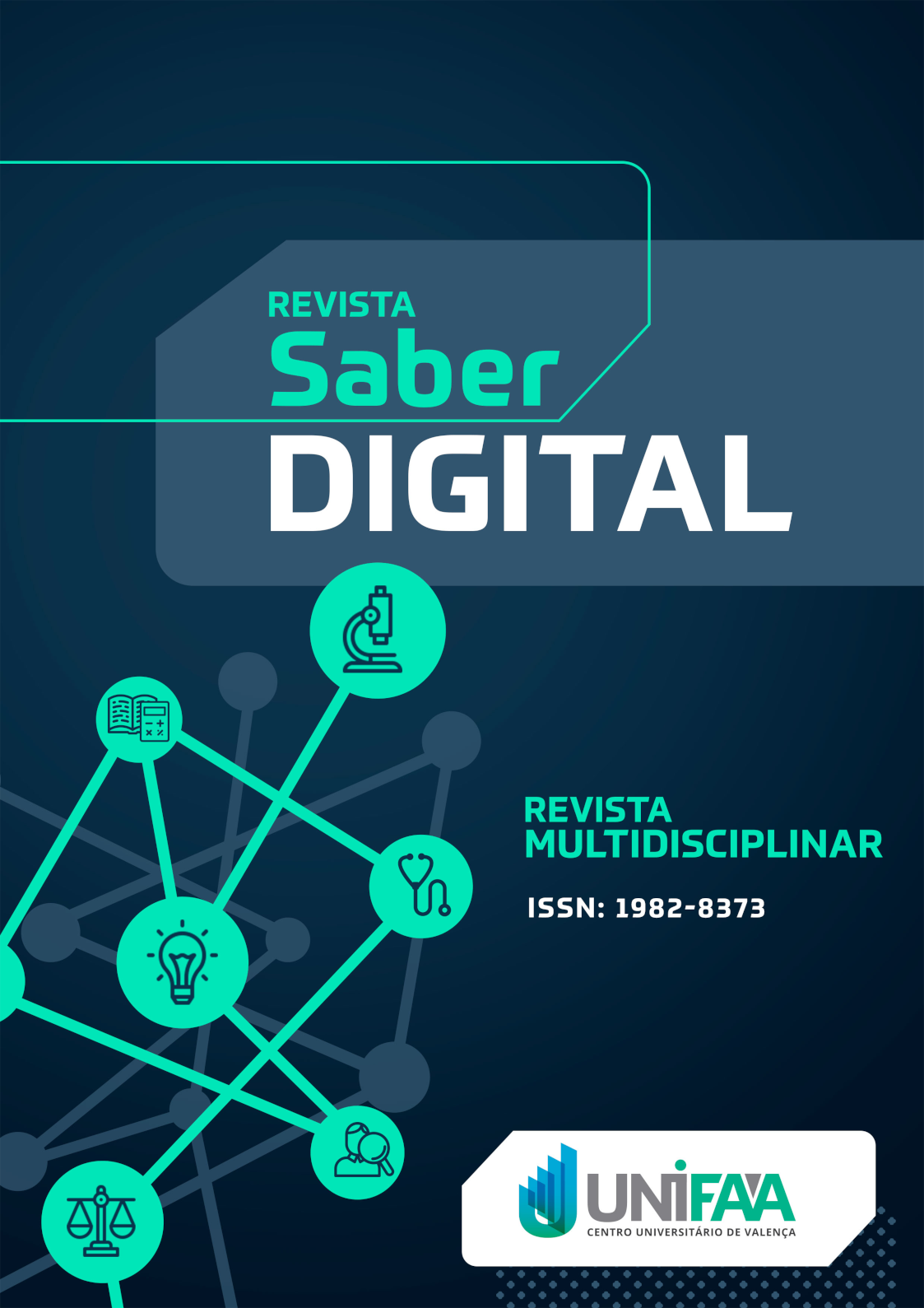Multi-resistant fungal sepsis in a neonatal ICU – Case Report
DOI:
https://doi.org/10.24859/SaberDigital.2023v16n3.1461Keywords:
Candida albicans, Systemic Inflammatory Response Syndrome, NewbornAbstract
Introduction: Neonatal sepsis (NS) is a clinical syndrome characterized by systemic clinical manifestations, especially hemodynamic changes, resulting from the presence of pathogenic microorganisms in normally sterile fluid, in the first month of the newborn's life. NS is an important cause of neurocognitive sequelae and neonatal mortality. Clinically, it is characterized by signs and symptoms related to infection in the first month of life, with or without bacteremia. The main causative agent of NS is the fungus of the genus Candida sp. Case report: Newborn (NB) with a gestational age of 36 weeks and 4 days required neonatal resuscitation. At 24 hours of life, he presented with septic shock, seizures, apnea and pulmonary hypertension, requiring antibiotic therapy. The results of the tracheal aspirate culture showed the fungus Candida parapsilosis, sensitive to the drug micafungin sodium. Discussion: Fungal infections are commonly associated with morbidity and mortality in preterm newborns with gestational age <32 weeks and birth weight <1,500g. It should be noted that there are obvious clinical presentations, such as respiratory difficulty, apnea, lethargy, fever or hypothermia, jaundice without another determining cause, vomiting and diarrhea, or even cutaneous manifestations, including petechiae, abscess and scleredema, which were observed in the newborn in the first 24 hours of life. Regarding the treatment of invasive candidiasis in the newborn whose case is reported, drug therapy with sodium micafungin was instituted. Conclusion: The diagnosis of NS, in the first hours of the newborn's life, was essential for the institution of therapy, preventing death.
Downloads
References
BIRRIE, E.; SISAY, E., TIBEBU, N.; TEFERA, B.; ZELEKE, M.; TEFERA, Z. Neonatal Sepsis and Associated Factors Among Newborns in Woldia and Dessie Comprehensive Specialized Hospitals, North-East Ethiopia, 2021. Infection and Drug Resistance, v. 15, p. 4169-4179, 2022. https://doi.org/10.2147/IDR.S374835. Disponível em: https://www.dovepress.com/neonatal-sepsis-and-associated-factors-among-newborns-in-woldia-and-de-peer-reviewed-fulltext-article-IDR . Acesso em 13 nov. 2023.
FIORENTINO, A. N.; SILVA, A. R. C.; BUCHARLESA, C. F.; PEREIRAB, Z. N.; CORREIAE, P. B.; MARQUES, G. G. et al. Os desafios no diagnóstico e manejo da sepse neonatal: uma revisão narrativa. Revista Eletrônica Acervo Saúde, v. 13, n.11, e9223, 2021. https://doi.org/10.25248/reas.e9223.2021 . Disponível em https://acervomais.com.br/index.php/saude/article/view/9223 Acesso em 13 nov. 2023.
FUNDAÇÃO OSWALDO CRUZ. Instituto Nacional de Saúde da Mulher, da Criança e do Adolescente Fernandes Figueira. Principais questões sobre infecção fúngica no recém-nascido. Portal de Boas Práticas em Saúde da Mulher, da Criança e do Adolescente. 2020. Disponível em:
https://portaldeboaspraticas.iff.fiocruz.br/atencao-recem-nascido/principais-questoes-sobre-infeccao-fungica-no-recem-nascido/ Acesso em 13 nov. 2023.
KIMBERLIN, D.; BARNETT, E.; LYNFIELD, R.; SAWYER, M. Report of the Committee on Infectious Diseases Candidiasis. Red Book: 2021–2024. 32. ed., 2021. Disponível em https://publications.aap.org/redbook/book/347/ Acesso em 15 fev. 2023.
PAMMI, M.; HOLLAND, L.; BUTLER, G.; GACSER, A.; BLISS, J.M. Candida parapsilosis is a Significant Neonatal Pathogen: A Systematic Review and Meta-Analysis. Pediatr Infect Dis J., v. 32, n. 5, e206–e216, 2013. Disponível em https://www.ncbi.nlm.nih.gov/pmc/articles/PMC3681839/citedby/ Acesso em 15 jun. 2023.
PROCIANOY, R. S.; SILVEIRA, R. C. The challenges of neonatal sepsis management. J Pediatr., 96 (S1):80-6, 2020. https://doi.org/10.1016/j.jped.2019.10.004 . Disponível em https://www.scielo.br/j/jped/a/5jFj7VRvCDqnwYyC4dfxYPw/?format=pdf&lang=en . Acesso em 13 nov. 2023.
RAFI, A.; MIAH, M.Z.; WADOOD, A.; HOSSAIN, G. Risk factors and etiology of neonatal sepsis after hospital delivery: A case-control study in a tertiary care hospital of Rajshahi, Bangladesh. Plos. 2020 https://doi.org/10.1371/journal.pone.0242275 Disponível em https://journals.plos.org/plosone/article?id=10.1371/journal.pone.0242275 Acesso em 15 fev. 2023.
SOCIEDADE BRASILEIRA DE PEDIATRIA. Sepse neonatal precoce e a abordagem do recém-nascido de risco: o que há de novo? 2022. Disponível em https://www.sbp.com.br/imprensa/detalhe/nid/sepse-neonatal-precoce-e-a-abordagem-do-recem-nascido-de-risco-o-que-ha-de-novo/ Acesso em 11 nov. 2023.
UNIVERSIDADE FEDERAL DO TRIÂNGULO MINEIRO. HOSPITAL DE CLÍNICAS. Abordagem da sepse neonatal tardia. Protocolo Clínico 2022. Disponível em https://www.gov.br/ebserh/pt-br/hospitais-universitarios/regiao-sudeste/hc-uftm/documentos/protocolos-assistenciais/12PRT.DMED.006AbordagemdaSepseNeonatalTardiaverso2.pdf. Acesso em 12 nov. 2023.
VADDI, V., GOYAL, M., MASCARENHAS, D., HARIBALAKRISHNA, A. Successful management of a cutaneous abscess caused by Candida albicans in a very low birth weight neonate. Journal of Clinical Neonatology, v.11, n.4, p. 219-221, 2022. https://doi.org/10.4103/jcn.jcn_36_22 Disponível em https://journals.lww.com/jocn/fulltext/2022/11040/successful_management_of_a_cutaneous_abscess.5.aspx . Acesso em 13 nov. 2023.
Downloads
Published
How to Cite
Issue
Section
License
Copyright (c) 2023 Revista Saber Digital

This work is licensed under a Creative Commons Attribution-NonCommercial 4.0 International License.
Declaração de Direito Autoral
Autores que publicam na Revista Saber Digital concordam com os seguintes termos:
Os autores mantêm os direitos e cedem à revista o direito à primeira publicação, simultaneamente submetido a uma licença Creative Commons que permite o compartilhamento por terceiros com a devida menção ao autor e à primeira publicação pela Revista Saber Digital.
Os autores podem entrar em acordos contratuais adicionais e separados para a distribuição não exclusiva da versão publicada da obra (por exemplo, postá-la em um repositório institucional ou publicá-la em um livro), com o reconhecimento de sua publicação inicial na Revista Saber Digital.

Este obra está licenciado com uma Licença https://creativecommons.org/licenses/by-nc/4.0/













